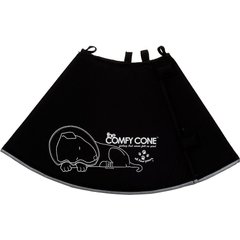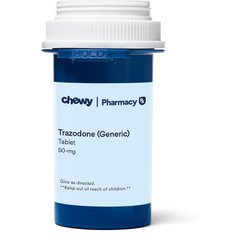Fine Needle Aspiration (FNA) for Dogs: What Is It, and Why Would a Dog Need It?
Nastasic/E+ via Getty Images
What Is Fine Needle Aspiration for Dogs?
Fine needle aspiration for dogs (FNA) is a diagnostic procedure in which a veterinarian places a needle into abnormal tissue—usually a mass—to collect a sample of cells for microscopic evaluation. FNA is the most frequently used technique to collect cells for cytology, the study of cells with a microscope.
When a veterinarian performs an FNA, they follow these steps:
-
A sterile needle is attached to an empty syringe.
-
The needle is inserted into the mass or abnormal tissue.
-
The plunger on the syringe is gently pulled back to create suction.
-
The lump or area being sampled may be poked multiple times, or you may notice the veterinarian redirecting the needle several times.
-
The needle is removed from the tissue and the sample is gently expelled onto a glass slide by pressing the syringe’s plunger.
-
The sample is then spread across the slide and air-dried.
In some cases, the veterinarian may stain the slide and look at it under a microscope. Other times, they may send the slide to a special lab for further analysis. If fluid is collected, the fluid may be placed in a tube and sent to an off-site lab for analysis by a pathologist, a specialist who looks at cells and tissues under a microscope.
Fine needle aspiration for dogs (FNA) is a diagnostic procedure in which a veterinarian places a needle into abnormal tissue—usually a mass—to collect a sample of cells for microscopic evaluation.
A sample collected from inside the body while using an ultrasound probe to guide the needle is called an ultrasound-guided FNA.
While dogs aren’t generally sedated for FNA of external structures, such as a skin lump, they are often sedated to collect a sample from an internal organ like the spleen or liver.
Why Would a Dog Need a Fine Needle Aspiration?
Reasons a vet would perform a fine needle aspiration for a dog include:
-
To collect cells from a mass on or beneath the skin, in the mouth, or attached to an internal organ like the spleen or liver
-
To collect a sample of a body fluid, such as urine or joint fluid
-
To collect a sample of an abnormal fluid, such as an accumulation of fluid within the abdomen or chest (effusion)
Risks of Fine Needle Aspiration for Dogs
Fine needle aspiration of masses can cause bleeding, pain, and, rarely, infection in dogs. If you notice your dog licking at an FNA site, it may be best to place a comfortable recovery collar to prevent infection. Some masses, such as mast cell tumors, can swell after an FNA.
FNA of masses or fluids within a body cavity carries a greater risk for significant bleeding.
For example, if a needle is placed into a dog’s spleen and the dog moves, a vessel could be cut. This is why pets are often sedated for spleen or liver FNA procedures.
Animals are usually examined with an ultrasound after the area is punctured to ensure there isn’t significant bleeding.
Lastly, some masses aren’t good candidates for FNA. For example, transitional cell carcinoma, which is the most common cancer of the urinary bladder in dogs, can be spread to the abdomen if an FNA is performed. Instead, sampling of the urine via a catheter is recommended.
Benefits of Fine Needle Aspiration for Dogs
In many cases, fine needle aspiration for dogs allows for quick diagnosis. Most FNAs don’t require sedation and can be easily performed by your veterinarian during a routine appointment. Generally, no special preparation or post-procedure care is needed.
The results of an FNA can determine your pet’s treatment plan.
For example, a mass composed of fat cells collected during FNA may be diagnosed as a benign (non-cancerous) lipoma and require only monitoring.
Most FNAs don’t require sedation and can be easily performed by your veterinarian during a routine appointment.
A mass composed of mast cells may be diagnosed as a mast cell tumor, and surgery may be planned to potentially cure the condition.
Effectiveness of Fine Needle Aspiration for Dogs
While fine needle aspiration for dogs is a great first diagnostic step for many lumps and bumps on pups, its effectiveness for diagnosis of a mass varies by the tumor’s type, size, and location.
Results can sometimes be inconclusive; in which case the next step is generally a surgical biopsy. If the mass is particularly small, it may be difficult to collect cells.
However, in large masses, the area sampled may not represent the entire lesion. Some lumps don’t release cells (exfoliate) very readily, so samples may not be helpful.
FNA for collection of fluids is generally effective for determining what type of fluid is present and if the fluid contains abnormal cells.
Cost of Fine Needle Aspiration for Dogs
A fine needle aspiration for dogs generally costs $50 to $200, with higher costs if the dog requires sedation, an internal mass requires ultrasound guidance, or the sample must be sent to a reference lab.
As long as the condition isn’t pre-existing, most pet insurance plans will cover veterinarian-recommended FNAs.
Preparation for Fine Needle Aspiration for Dogs
Usually, no at-home preparation is needed for fine needle aspiration for dogs.
However, if your veterinarian plans to collect a urine sample via FNA, they may ask you to prevent your dog from urinating for a specified amount of time prior to the procedure.
For FNA of internal organs, the skin overlying the area may be shaved and cleaned to reduce the risk of infection.
Dogs may be sedated to facilitate a stress-free procedure. Your veterinarian may also pre-medicate your pet with an antihistamine, such as diphenhydramine, to prevent a reaction if they suspect a mast cell tumor.
If you are concerned that your dog may have excessive anxiety in the veterinary clinic, speak with your veterinarian about pre-medicating with an anti-anxiety medication like trazodone.
Care and Recovery for Fine Needle Aspiration for Dogs
Most dogs will go on about their day after an FNA as if nothing happened.
Some masses may bleed a small amount after the procedure, and your dog could be sensitive around the needle puncture site.
If your dog is sensitive to touch or you notice swelling after an FNA, contact your veterinarian.
In some cases, they may recommend an anti-inflammatory medication like carprofen. In most cases, your dog will not need any additional care immediately after an FNA.
Alternatives of Fine Needle Aspiration for Dogs
For masses, the main alternative to FNA is a surgical biopsy. There are several benefits to surgical biopsy, including:
-
It can provide a definitive diagnosis, while FNA and cytology sometimes can’t.
-
It can usually determine whether a cancerous mass is likely to spread to other areas of the body or invade nearby tissues.
-
It may allow for complete removal of the tumor, sometimes curing the condition.
Disadvantages to surgical biopsy include:
-
Higher cost ranging from several hundred dollars to over $1,000 more depending on the location, whether the entire mass is removed during the procedure, surgical time, and surgical difficulty
-
Need for anesthesia and associated risks
-
Requirement for post-operative care and management
-
A benign mass that doesn’t require surgical treatment may be removed unnecessarily
FNA is the only good option for collection of fluid within the abdomen or chest cavity.
Urine can also be collected from a surface after the dog pees, directly into a collection device as the dog urinates, or by placing a urinary catheter.
Collecting urine from a surface (voided samples) or during urination (free catch) is less invasive and easier, but the sample will not be sterile. If your veterinarian is trying to determine if your pet has a urinary tract infection or plans to culture the urine, this is not optimal.
Cystocentesis, a procedure where a needle is inserted into the bladder to obtain a urine sample, is required.
Fine Needle Aspiration for Dogs FAQs
Is fine needle aspiration painful for dogs?
Fine needle aspiration can be painful for dogs because the procedure involves a needle being placed into the dog’s tissues. Despite this, many dogs will rest comfortably during an FNA procedure.
For dogs who are reactive to needles or require collection of cells from an internal organ, sedation is recommended.
How long does it take to get fine needle aspiration results for dogs?
If the sample is reviewed by your veterinarian, you may receive same-day results.
However, if the veterinarian feels the sample needs interpretation by a pathologist, the results may take several days to more than a week.
Do dogs need to be sedated for fine needle aspiration?
Most dogs don’t require sedation for FNA of masses on or beneath the skin. Masses in the mouth or the abdomen often require sedation for patient safety.
FNA to collect a urine sample (cystocentesis) is often performed without sedation while an FNA of a joint or to collect fluid within the chest or abdomen may require sedation.



